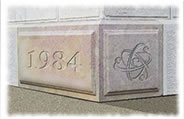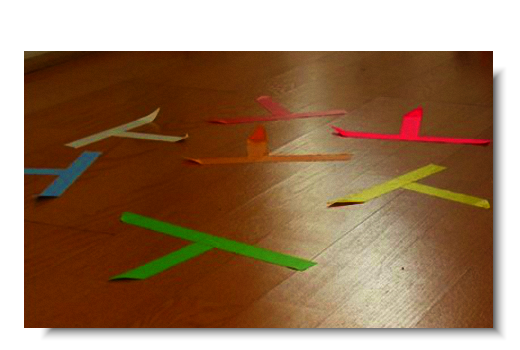Hitting Your Marks!
The “Back to Basics” Series
“Always leave the other guy a place to stand…”
—J. E. Morrow
American Philosopher and Social Commentator
So, where do I stand?”
It’s a question asked by every speaker. The answer is twofold:
1. Wherever you choose! (You being The Star and all…)
2. Wherever the light and the technology will allow. (It’s tough to be The Star if you’re standing in the dark and out of reach of the technology…)
The presentation originates with you, but the opportunity originates with your boss, your client, the organization paying you or the group who invited you. It’s a team effort isn’t it? Which is why you might find yourself sandwiched into a difficult space behind a ridiculous lectern, with a barely working microphone and an audience tucking into their meal while you attempt to interest them in your material. Go ahead — Glow!
You can’t sit still for that kind of treatment. You and your message require more consideration and an honest shot at being seen and understood… Much to the surprise of many, the speaker’s job is not only to come prepared to speak, but also to act as stage manager, electronics pro, intro writer, floor director and acting Diva! It’s your reputation. It’s your presentation, your baby! The ultimate responsibility is — yours. Handle it!
One of the issues is deciding where (and how) to stand. It’s the choreography stupid!
Lighting and camera focus are still not as quick as the moving human figure, so if you move too far, too fast, the camera may lose focus and the lighting go off kilter. You only look your best in certain spots where the light, the focus and the space are perfect. So, there’s a premium on the actor, the performer, the speaker staying where they belong on the set, the stage, the platform. We use “Marks” to remind us where to stand, where to go and where to hang out as we do our “stage business.” “Hitting Your Marks” is a skill that every actor must master, but also every speaker and performer.
So, what’s a “Mark?”
Start with the idea that each part of the presentation might benefit from a controlled amount of movement (with a character and a direction) which would underscore the ideas and progress through the script. Each of those movements might culminate at a particular place — A Mark — which is delineated by a piece of tape on the floor.
“Hitting Your Marks” means arriving at the precise spot as you initiate each separate part of the presentation. Being in the right place at the right time with the right gesture or movement is what choreography is all about.
We use the term “Alignment” to introduce the idea that movement, content and structure should “play nicely together.” There’s a character in a move, that should align with and underscore the content of the words while also signaling the beginning, the middle, and end of the section or the entire presentation.
That’s a lot to think about, so we make it easier for the speaker/actor by marking their spots with tape on the floor. There’s Home Base. Then you “Hit Your First Mark” as you introduce Section One! Section Two/Second Mark! and so on… Introductions and Conclusions might usually take place at the same dead center location — “Coming Full Circle…” Once again, the movement physically underscores the content.
For this discussion, we’re leaving out visual aids, audio sound tracks, props and costumes— but you see where this is going right? It’s a show! And you are both the director and the star! Complex, Yes? Which is why we hang all these components on a very simple Armature called the “Ready, Set, Go!®” Box Diagram. (Introduction, Body, Conclusion. Three or Four Topics.) This way, the speaker can visualize the sequence and flow of ideas in the presentation, but also an entirely separate and distinct level of complexity: the physical movement in space.
It begins with words inside a flow chart, then adds stage directions, highlights for emphasis, a speaker’s view of screens, arrows for lights up or down — it’s all up to you! They’re your notes!
To the audience, it simply appears that the speaker is relaxed and comfortable in front of the group. She introduces her topics, then moves easily to stage left, hitting her invisible mark spot on, where she hangs out for a while, working through Section One. As she transitions to Section Two, she moves seamlessly over to her second mark and “works that space.” To them, she just appears totally comfortable with the stage, but we know her comfort derives in part from the fact that all the chance has been taken out of her movements — which are the result of some very canny choreography — coordinating her movement with the structure and the atmosphere of her remarks.
That’s the game. Not merely making sure you have an acceptable place from which to work and be seen but choreographing the entire presentation, so the audience gets not only a verbal story, but a comprehensive, coherently staged “show” as well!
Remember, everyone deserves a place to stand!
Applications
1. Personally
You don’t need to read all of Castaneda’s Don Juan in order to discover that there is a particular place in any room in which you will feel better than any other. That’s “Your Spot.” Maybe it’s front and center. Perhaps behind a big, safe, lectern or even a podium. Maybe in a corner, flanked by walls on either side… It doesn’t really matter to the audience; they might even like a little variety from time to time. Find your spot, make sure the light is right, that you can get all the electronic support you require, and that it works from a choreographic standpoint. Then Rock! Pretty soon, it’ll become part of your inimitable style!
2. At Home
The Kids need some help and coaching to be comfortable in front of a group. (Of course, adults never do… ;-)) So give them the secret Don Juan speech about “Finding Your Spot!” and help them ferret out their special place and applaud as they rehearse and slowly improve as they gather confidence and certainty. Then have them try two or three different spaces so they won’t be unnerved if the teacher in class forces them rigidly behind the lectern.
3. At Work
The Office can be terrible about forcing you into a space behind, underneath or beside something some designer thought would look good. Don’t buy it! You can speak from wherever you feel best, and that has a lot to do with your setting it up to suit your requirements. So be prepared to do your own “roadie work” in setting up and breaking down your equipment and materials. Then enjoy the glow of having done a dynamite job and hearing the applause…
It’s hard enough to do an hour from memory in front of an auditorium. The discipline of having established the marks and handled the choreography gives you enough free brain circuitry to handle the other issues with certainty.
You always perform better if you know where to stand.
Dessert:
“The ‘Mark’ of a True Superstar — the Studio Floor Section from Which Carson’s Legendary Monologues Were Delivered.”
Subscribe to our Newsletter


